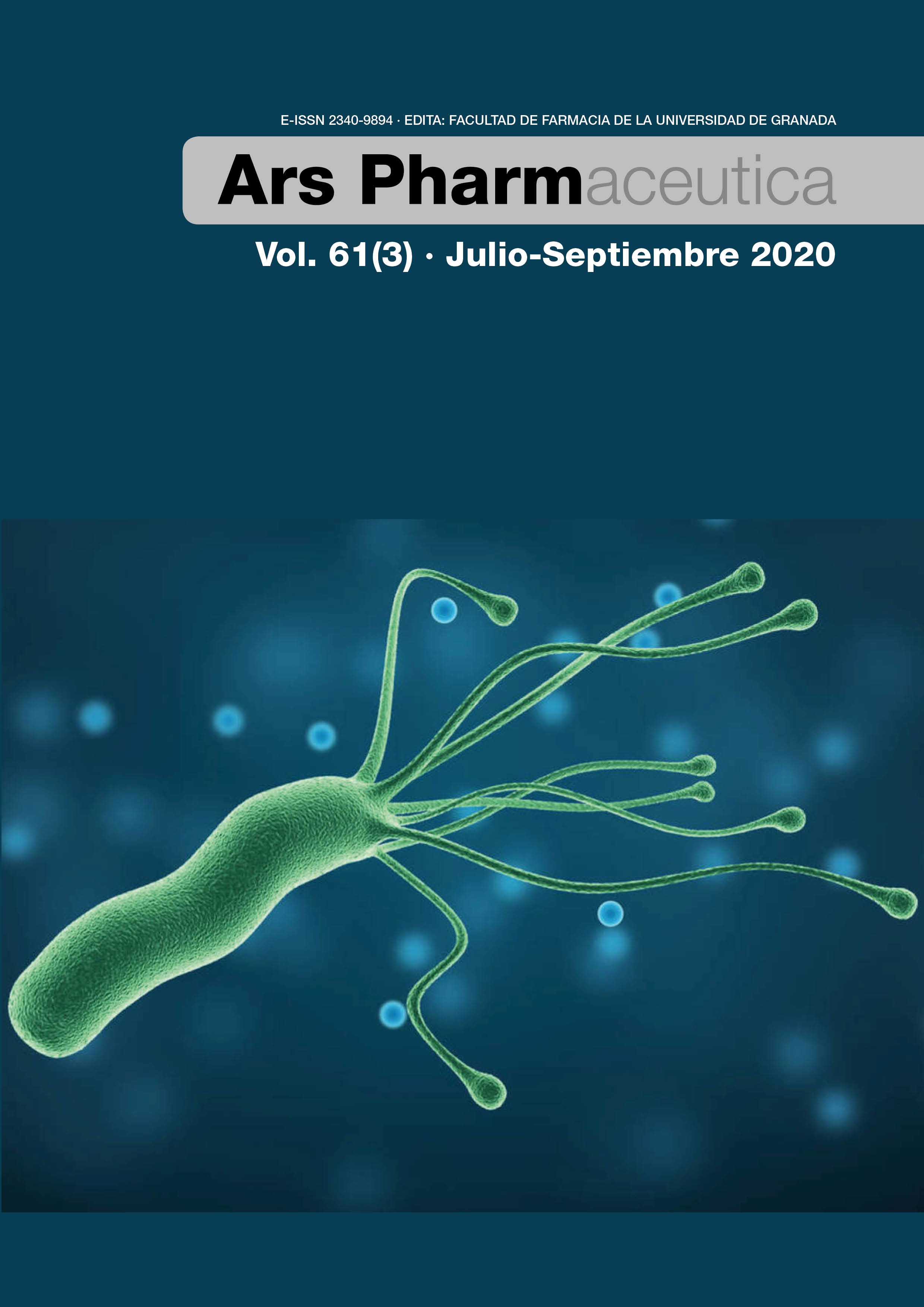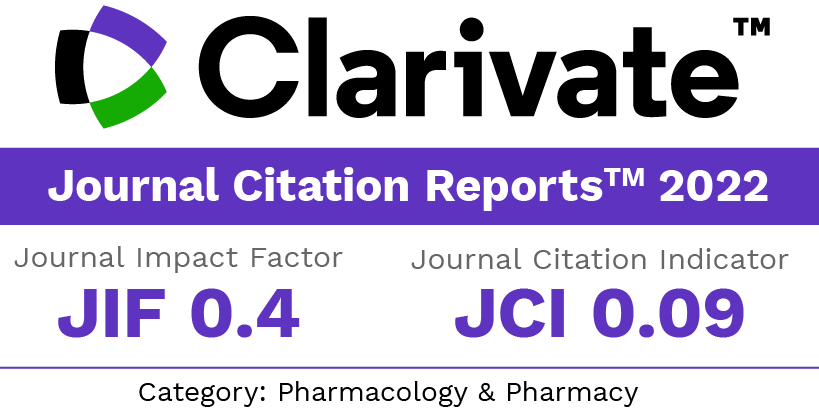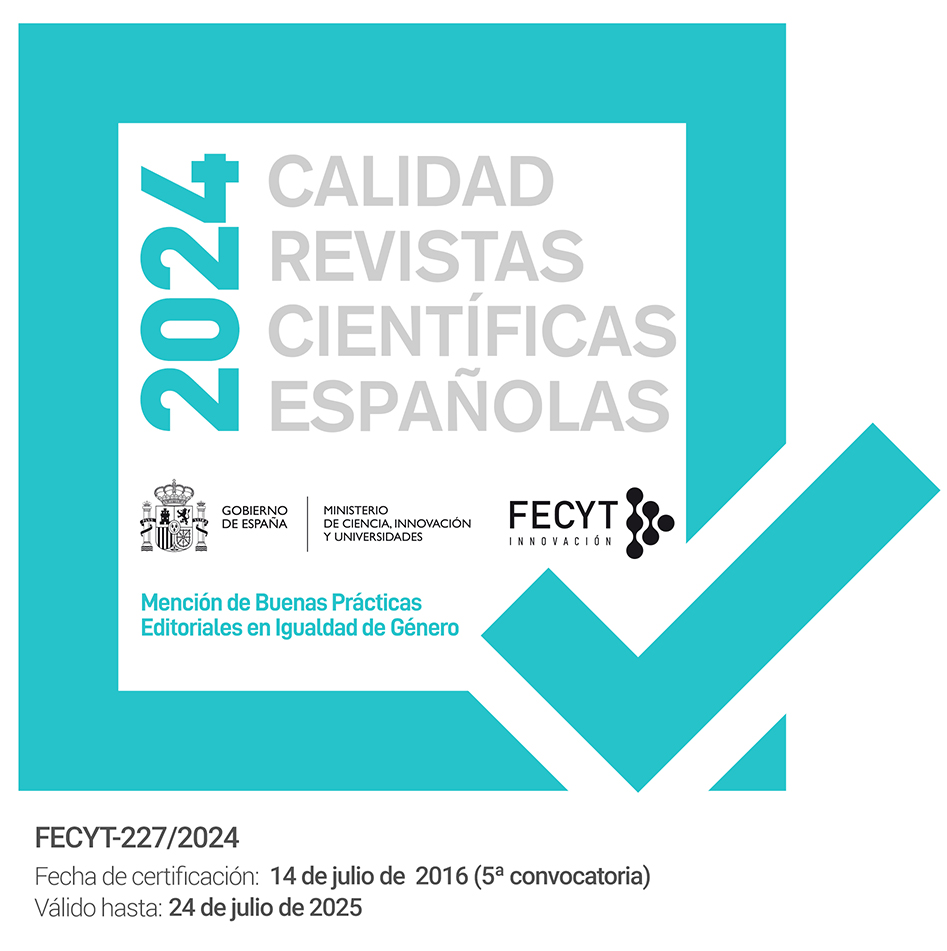Development and Optimization of Amoxicillin Floating Raft System to effectively treat Helicobacter pylori infection
DOI:
https://doi.org/10.30827/ars.v61i3.13718Keywords:
Floating raft system, Helicobacter pylori, factorial design, Invivo studiesAbstract
Introduction: The aim of the present study was to develop and to characterize the Floating raft system (FRS) of Amoxicillin to enhance gastric residence time and drug release to target Helicobacter pylori effectively.
Method: In the present study, guar gum, Glyceryl Monostearate (GMS), Calcium carbonate were selected as factors. Gelation duration (h), floating lag time (min), and % Cumulative drug release (CDR) were selected as responses. 23 factorial design with replicates was selected for experimentation.
Results: It was observed that Guar gum and GMS were the major factors affecting gelation duration, increase in the quantity of both Guar gum and GMS increased gelation duration i.e., sustained gelation period (24 h). Floating time increased with an increase in the amount of guar gum and calcium carbonate, whereas an increase in the quantity of GMS decreased floating time. Guar gum, calcium carbonate, and GMS exhibited an antagonistic effect on % CDR. Contour plots were used to identify design space; further numerical analysis yielded 12 best solutions based on desirability. FRS exhibited greater AUCo-t, Cmax, tmax, and t1/2 when compared to marketed formulation approximately 2.30 folds enhancement and prolongation with a sustained release for greater than 24 h that might be due to better gelation.
Conclusions: It can be concluded that the floating raft system was successfully developed by the Design of experiment (DoE) application with fewer trails and by utilizing easily available excipients for better floating, gelation, and sustained delivery of the drug.
Downloads
References
Wroblewski LE, Peek RM Jr, Wilson KT. Helicobacter pylori and gastric cancer: factors that modulate disease risk. Clin Microbiol Rev 2010;23(4):713-39. doi:10.1128/CMR.00011-10.
Abou Youssef NA, Kassem AA, El-Massik MA, Boraie NA. Development of gastroretentive metronidazole floating raft system for targeting Helicobacter pylori. Int J Pharm 2015;486 (1-2):297-305. doi:10.1016/j.ijpharm.2015.04.004
Hampson F, Farndale A, Strugala V, Sykes J, Jolliffe I, Dettmar P. Alginate rafts and their characterisation. Int J Pharm 2005;294(1-2):137-47. doi:10.1016/j.ijpharm.2005.01.036
Awasthi R, Kulkarni GJ. Development and characterization of Amoxicillin loaded floating microballoons for the treatment of Helicobacter pylori induced gastric ulcer. Asian J Pharm 2013;8(3):174-80. doi: 10.1016/j.ajps.2013.07.023
Hampson FC, Jolliffe IG, Bakhtyari A, Taylor G, Sykes J, Johnstone LM, et al. Alginate–antacid combinations: raft formation and gastric retention studies. Drug Dev Ind Pharm 2010;36(5):614-23. doi:10.3109/03639040903388290
Rajinikanth P, Mishra B. Floating in situ gelling system for stomach site-specific delivery of clarithromycin to eradicate H.pylori. J Control Release 2008;125(1):33-41.doi:org/10.1016/j.jconrel.2007.07.011.
Mohamed AEl Nabarawi, Mahmoud HTeaima, Rehab AAbd El-Monem, Nagla AEl Nabarawy, Dalia AGaber. Formulation, release characteristics, and bioavailability study of gastroretentive floating matrix tablet and floating raft system of Mebeverine HCl. Drug Des Devel Ther 2017;11-1081-1093. doi:10.2147/DDDT.S131936.
Samar Abouelatta M, Ahmed Aboelwafa A, Omaima El-Gazayerly N. Gastroretentive raft liquid delivery system as a new approach to release extension for carrier mediated drug. Drug Deliv 2018;25:1161-1174. doi: 10.1080/10717544.2018.1474969.
Downloads
Published
How to Cite
Issue
Section
License
The articles, which are published in this journal, are subject to the following terms in relation to the rights of patrimonial or exploitation:
- The authors will keep their copyright and guarantee to the journal the right of first publication of their work, which will be distributed with a Creative Commons BY-NC-SA 4.0 license that allows third parties to reuse the work whenever its author, quote the original source and do not make commercial use of it.
b. The authors may adopt other non-exclusive licensing agreements for the distribution of the published version of the work (e.g., deposit it in an institutional telematic file or publish it in a monographic volume) provided that the original source of its publication is indicated.
c. Authors are allowed and advised to disseminate their work through the Internet (e.g. in institutional repositories or on their website) before and during the submission process, which can produce interesting exchanges and increase citations of the published work. (See The effect of open access).























